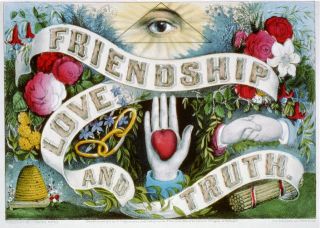Many of the most memorable works of western literature celebrate friendship. Achilles and Patroclus, David and Jonathan, and Damon and Pythias are only a few of the famous literary depictions of intimate friendship.
Many today fear that a hyper-individualistic, highly mobile society has undermined the capacity for sustained intimacy. Social media, from this point of view, has made friendship more superficial. It is certainly the case that a certain kind of lifelong personal bond, involving face-to-face connection over decades, has become less common, a casualty of the geographical dispersion that now characterizes American life.
But has friendship really declined? The reality is more complex.
Platonic friendships between women and men have never been more common. So, too, are friendships that cut across ethnic and racial lines. And cellphones, email, social media, and texting allow friends to maintain contact across time and space.
If we are to truly understand what is distinctive about friendship today, it is worthwhile to look at friendship over time. Like every other facet of life, friendship has a history.
In the ancient world, friendship was highly valued, but true friendship, authorities like Aristotle claimed, could only take place among men of leisure. Only these men, purportedly, had the independence, stature, and education to engage in the art of friendship.
In contrast, the early Christian Church took a rather negative view of exclusive friendships, preferring spiritual connections among all Christians.
Unlike friendship today, which is essentially a private relationship, in the past, friendship had a public dimension. In medieval Europe there were even public ceremonies, somewhat similar to marriage, that bound friends together. One’s patrons and dependents were called friends.
Before the late 18th century, men deemed women incapable of true friendship. The word “gossip” was used to describe a woman’s close friend, giving rise to the association of gossip with tittle-tattle and hurtful chatter.
As commercial society expanded in the 19th century, true friendship came to be viewed as the polar opposite of instrumental or economic relationships. Sociability became the hallmark of male friendships, fostered in saloons, barber shops, and fraternal societies.
This kind of collective male conviviality can still be found in fraternity houses and locker rooms, but for the most part it has declined, as many male-only bastions, apart from strip clubs, disappear.
Women in the 18th and 19th centuries looked to friendship for their closest relationships, far more intimate and emotionally intense than marriages. Indeed, women tended to speak of their close friends in familial terms, as sisterly, maternal, and filial, or even matrimonial.
Advertisement
Today, in stark contrast, close family relationships are likened to the bonds of friendship. Couples aspire to be best friends, and many parents strive to befriend their children.
Friendship in the 19th century acquired deep symbolic significance, and many classic works of 19th-century literature, including The Last of the Mohicans, Moby-Dick, and The Adventures of Huckleberry Finn, idealize cross-class, cross-racial friendships—but locate these friendships outside of established civilization. Such friendship may have represented a cultural fantasy, but one that seemed unrealizable within existing American society.

In today’s time-starved, stressful, highly mobile society, friendship has never been more necessary. It seems likely that loneliness and isolation contribute to more deaths than cancer. Nor have our standards of what constitutes true intimacy in friendship been higher. But the essence of friendship—frequent, lengthy face-to-face conversations—has grown ever more elusive.
We would do well to heed Aristotle:
“Without friends, no one would want to live, even if he had all other goods.”



No comments:
Post a Comment